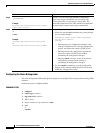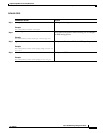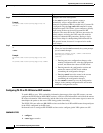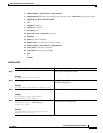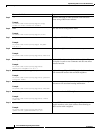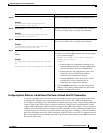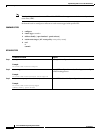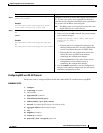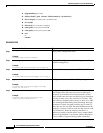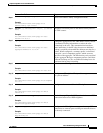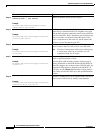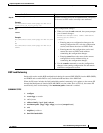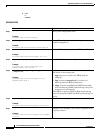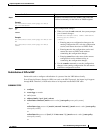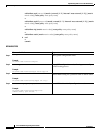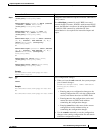
Implementing BGP on Cisco IOS XR Software
How to Implement BGP on Cisco IOS XR Software
RC-106
Cisco IOS XR Routing Configuration Guide
OL-14356-01
13. ebgp-multihop [ttl-value]
14. address-family {ipv4 {unicast | labeled-unicast} | ipv6 unicast}
15. site-of-origin [as-number:nn | ip-address:nn]
16. as-override
17. allowas-in [as-occurrence-number]
18. route-policy route-policy-name in
19. route-policy route-policy-name out
20. end
or
commit
DETAILED STEPS
Command or Action Purpose
Step 1
configure
Example:
RP/0/RP0/CPU0:router# configure
Enters global configuration mode.
Step 2
router bgp as-number
Example:
RP/0/RP0/CPU0:router(config)# router bgp 120
Enters BGP configuration mode, allowing you to configure
the BGP routing process.
Step 3
vrf vrf-name
Example:
RP/0/RP0/CPU0:router(config-bgp)# vrf vrf_pe_2
Enables BGP routing for a particular VRF on the PE router.
Step 4
bgp router-id ip-address
Example:
RP/0/RP0/CPU0:router(config-bgp-vrf)# bgp
router-id 172.16.9.9
Configures a fixed router ID for a BGP-speaking router.
Step 5
label-allocation-mode per-ce
Example:
RP/0/RP0/CPU0:router(config-bgp-vrf)#
label-allocation-mode per-ce
Configures the per-CE label allocation mode to avoid an
extra lookup on the PE router and conserve label space
(per-prefix is the default label allocation mode). In this
mode, the PE router allocates one label for every immediate
next-hop (in most cases, this would be a CE router). This
label is directly mapped to the next hop, so there is no VRF
route lookup performed during data forwarding. However,
the number of labels allocated would be one for each CE
rather than one for each VRF. Because BGP knows all the
next hops, it assigns a label for each next hop (not for each
PE-CE interface). When the outgoing interface is a
multiaccess interface and the media access control (MAC)
address of the neighbor is not known, Address Resolution
Protocol (ARP) is triggered during packet forwarding.



